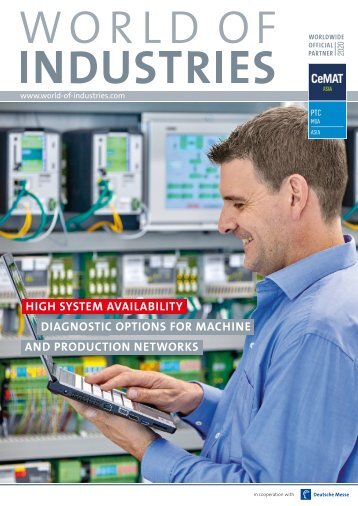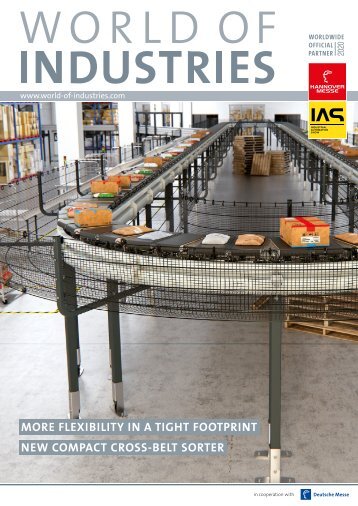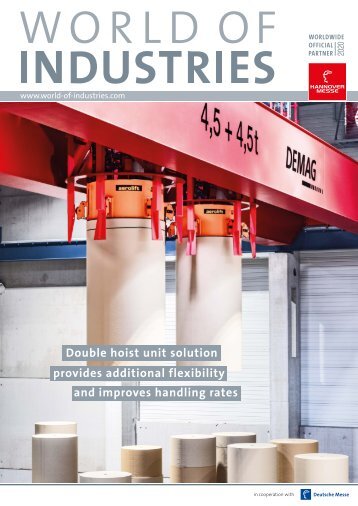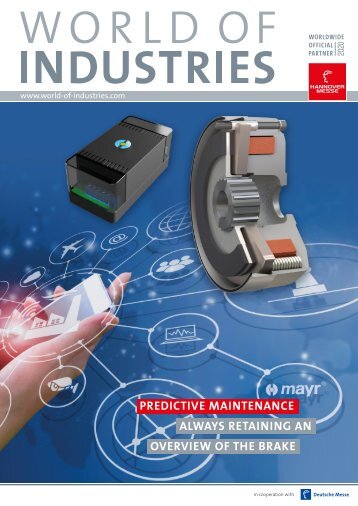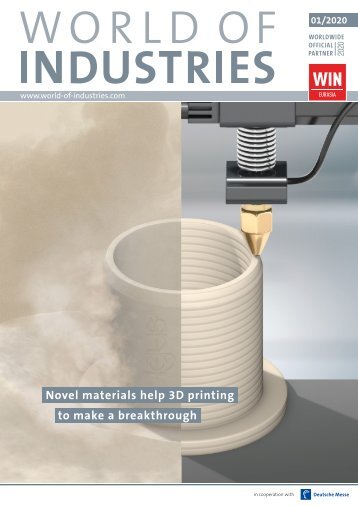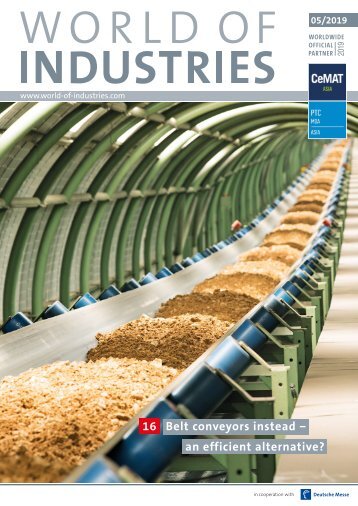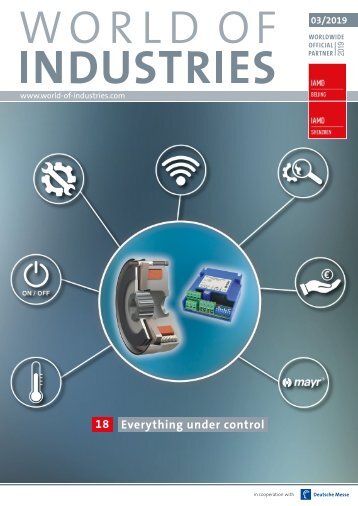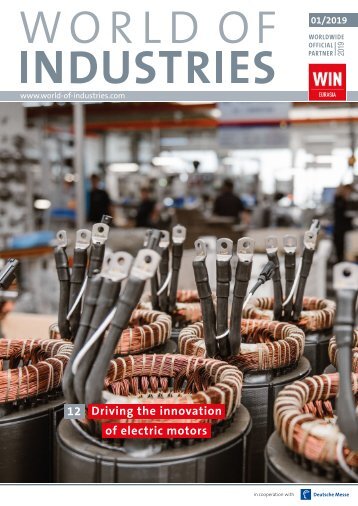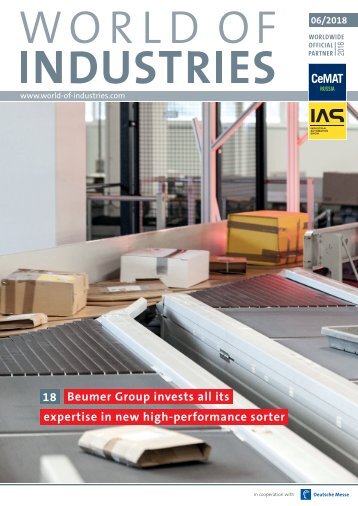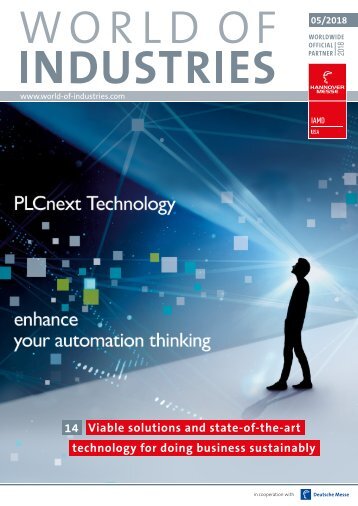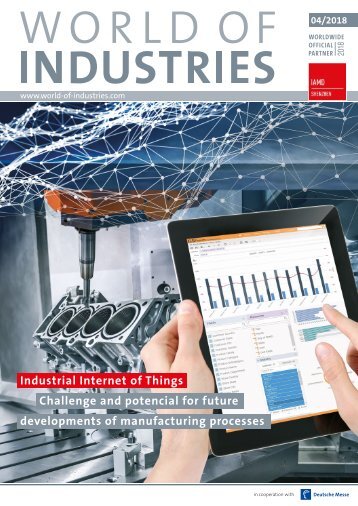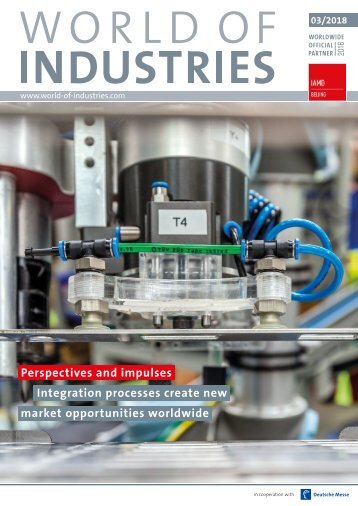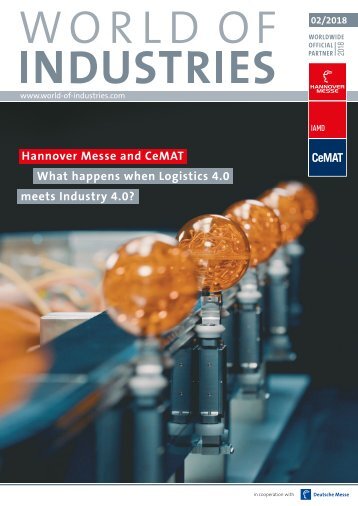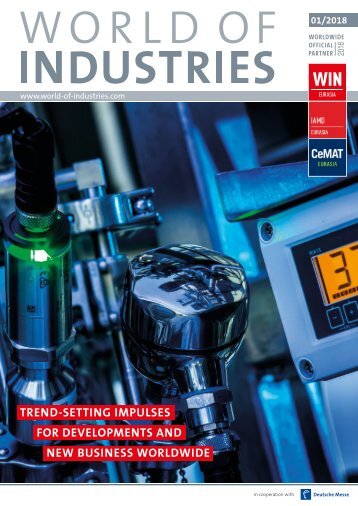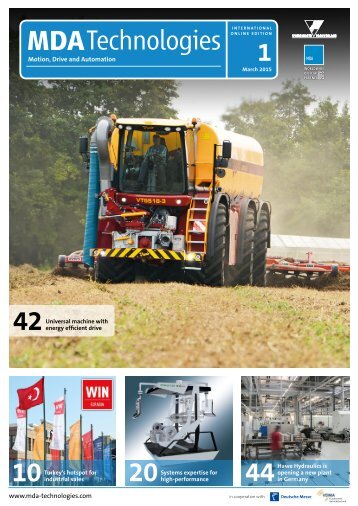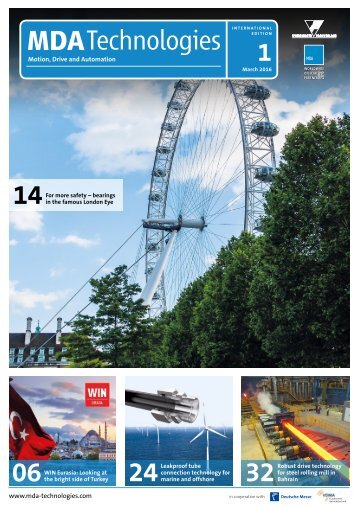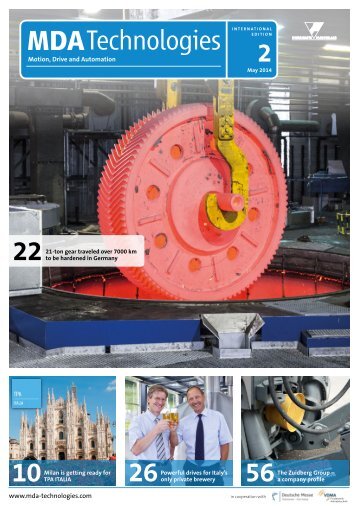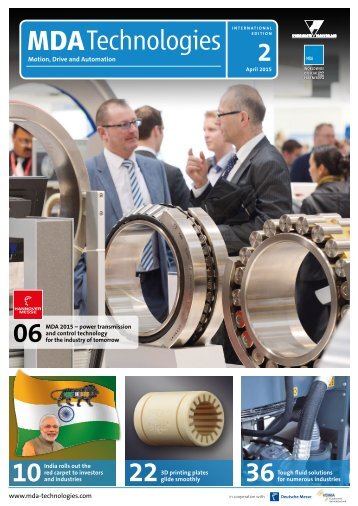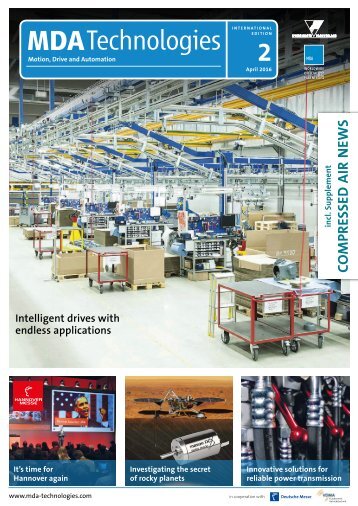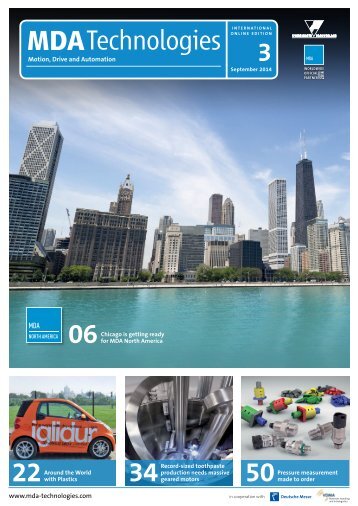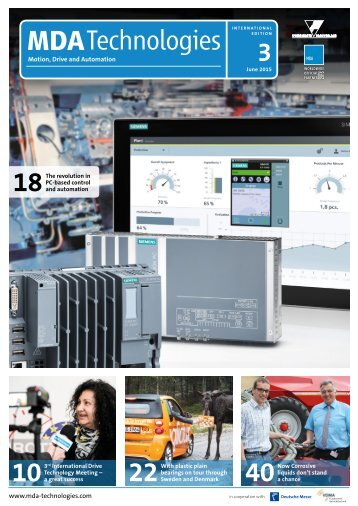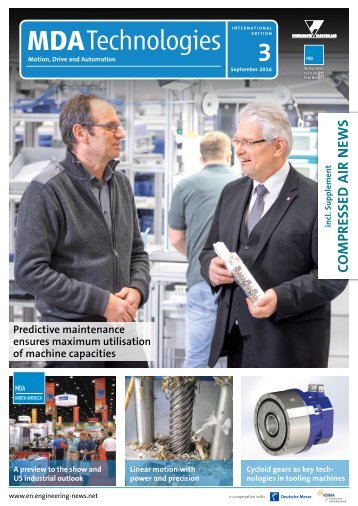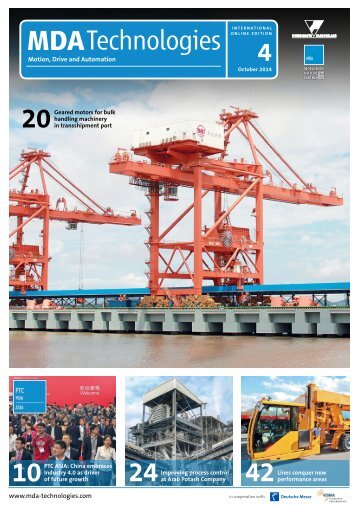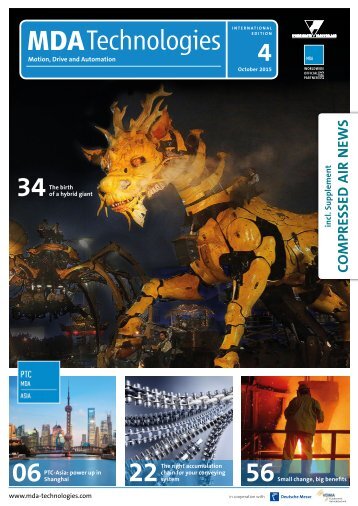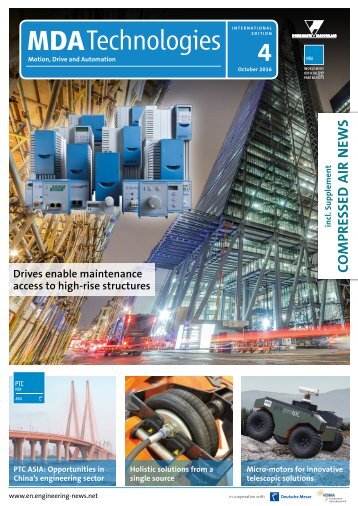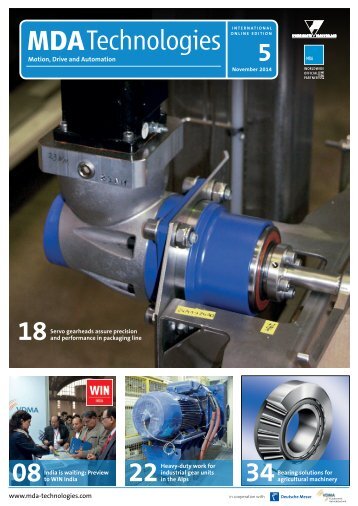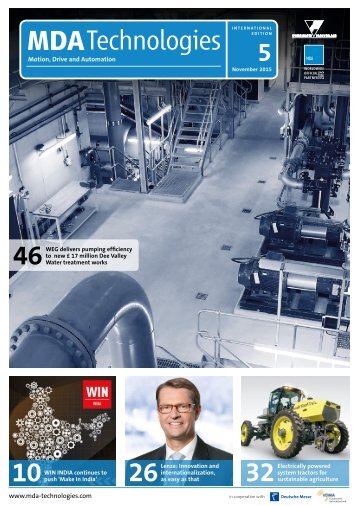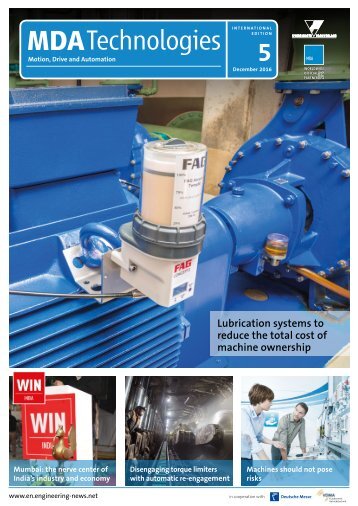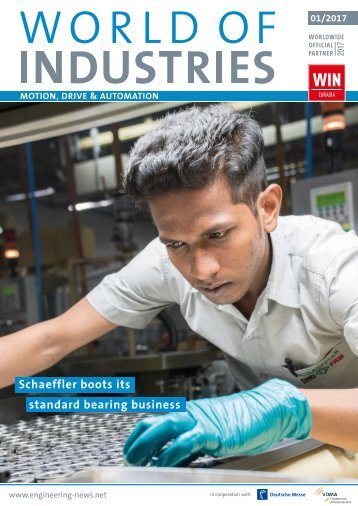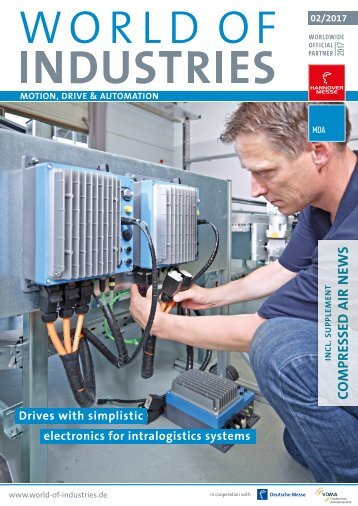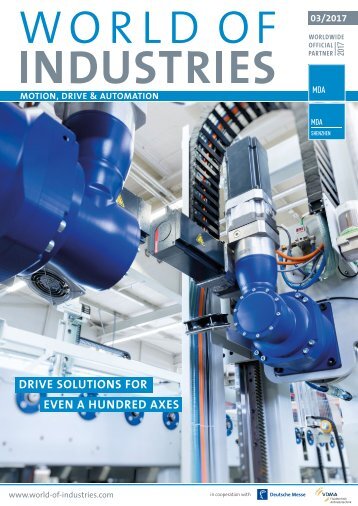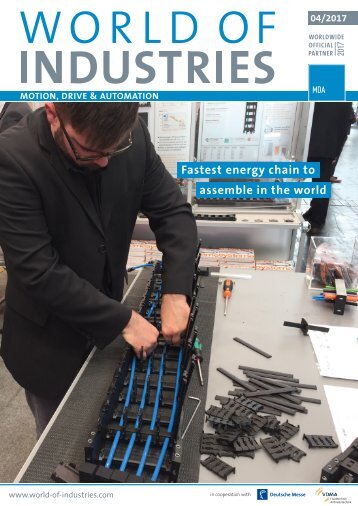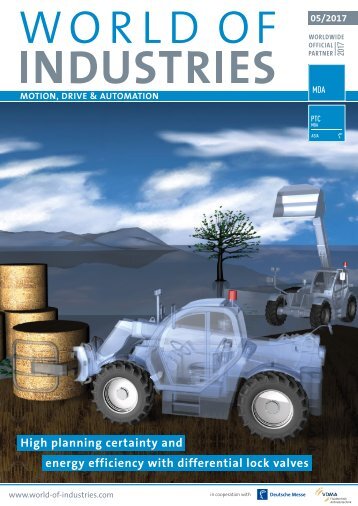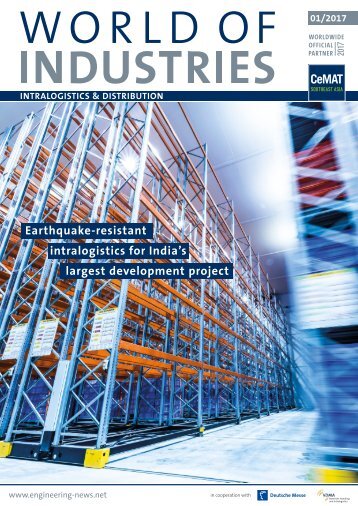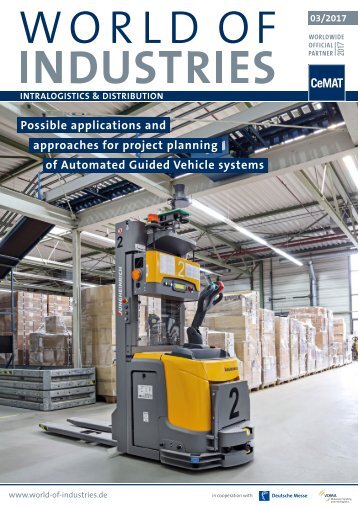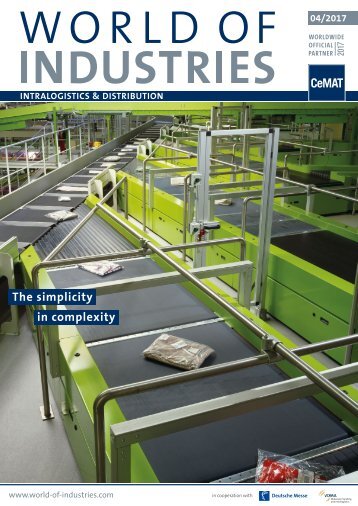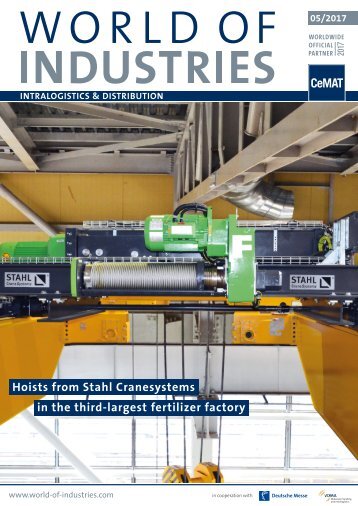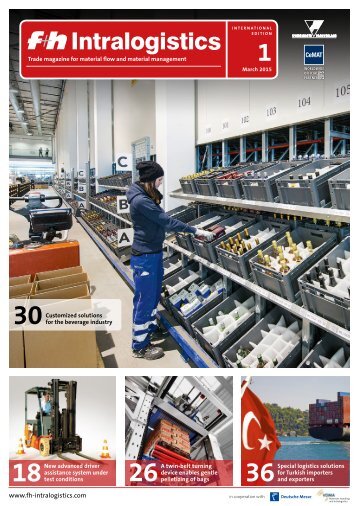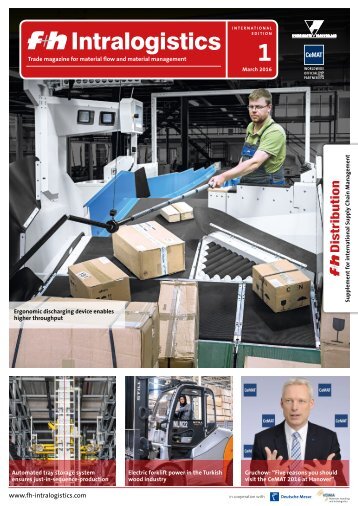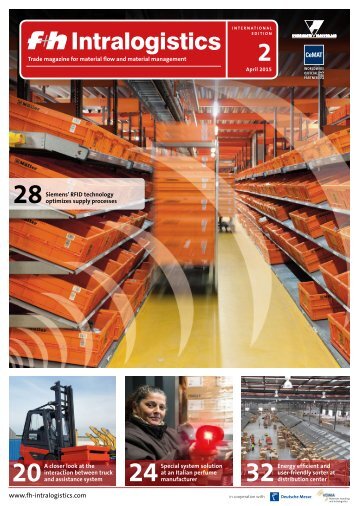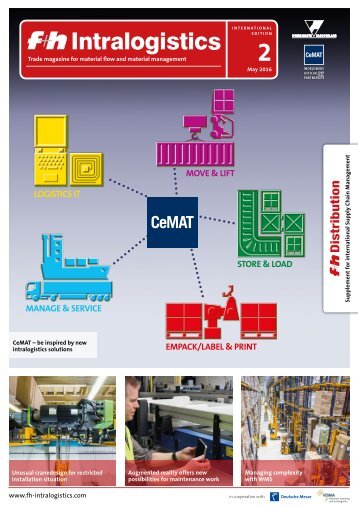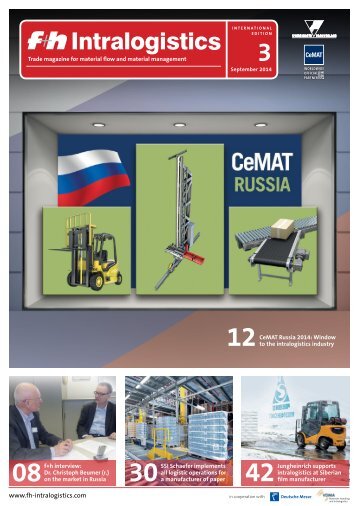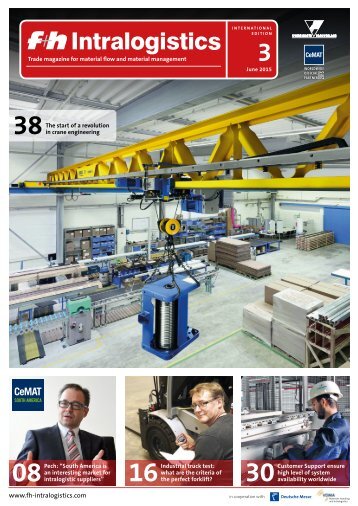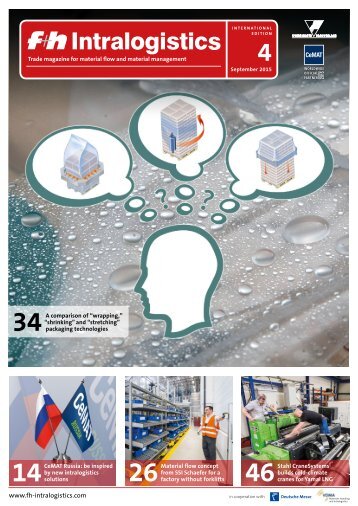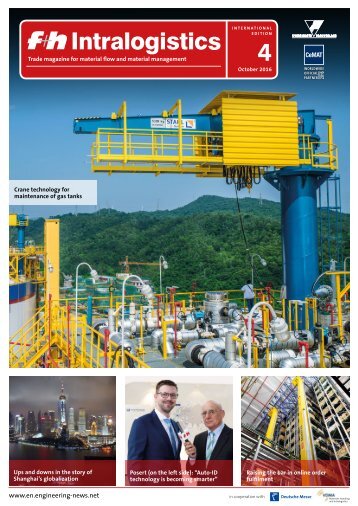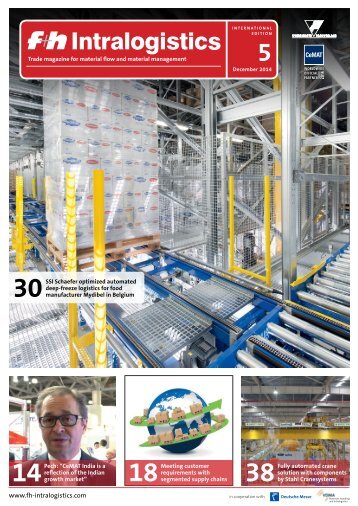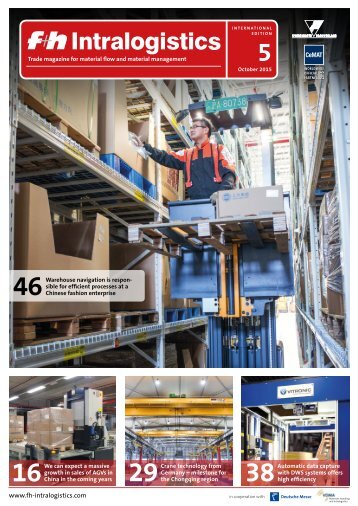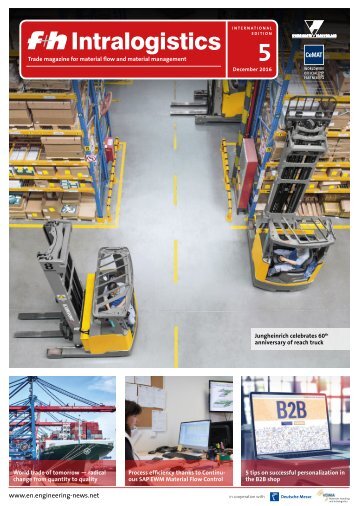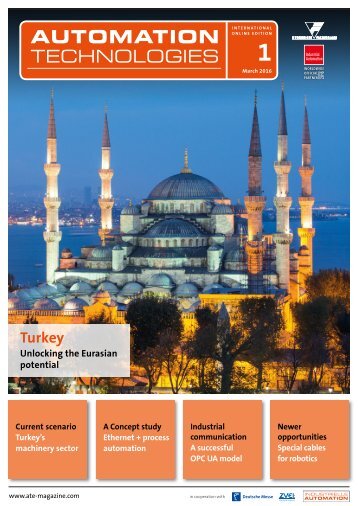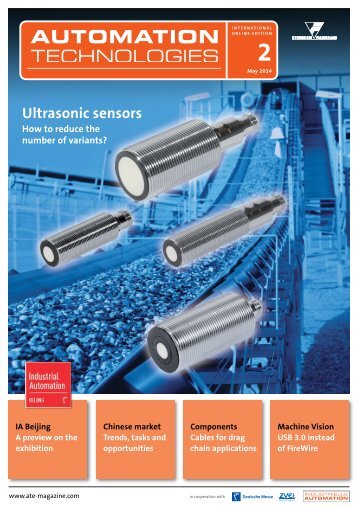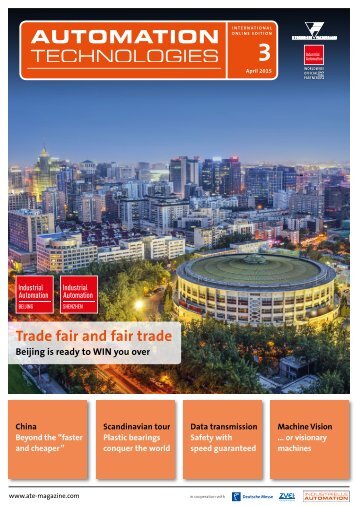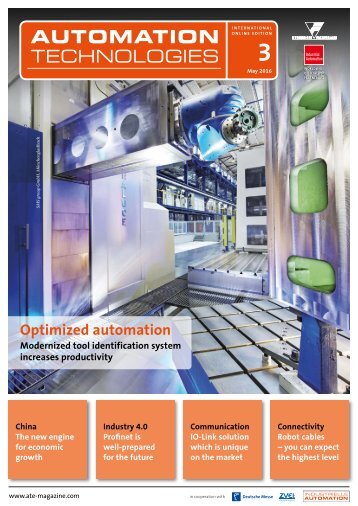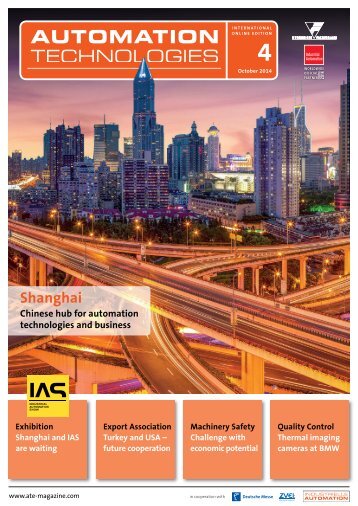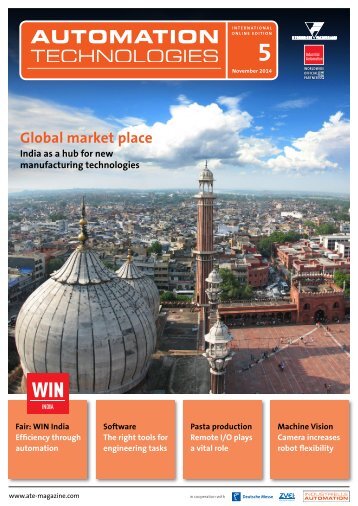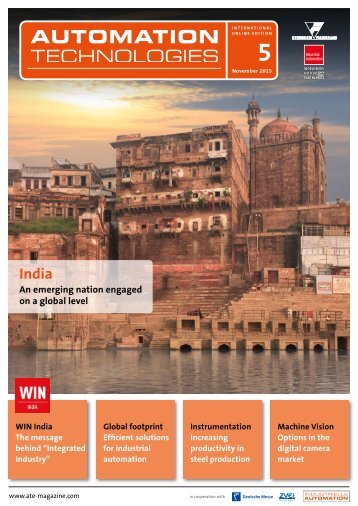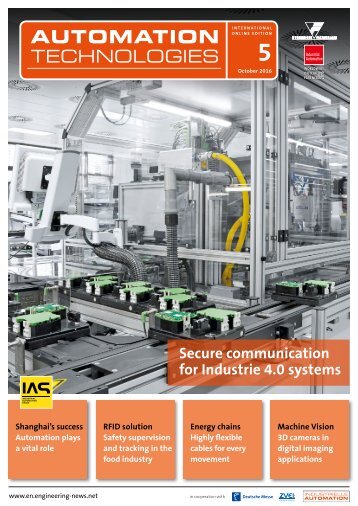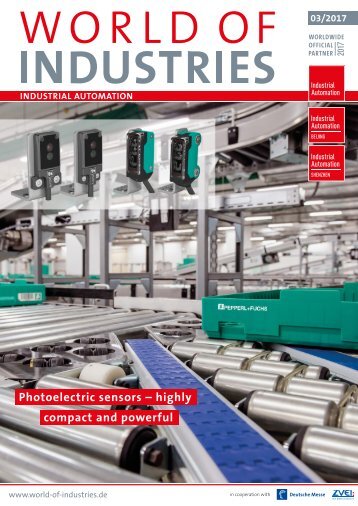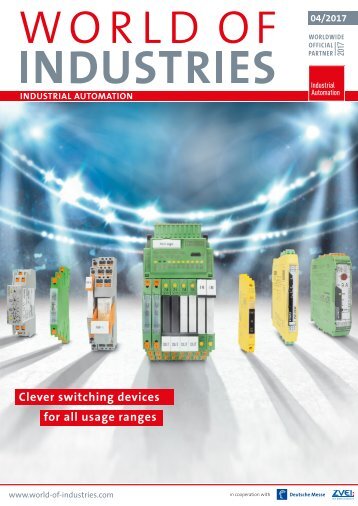WORLD OF INDUSTRIES 08/2018
- Text
- Industries
NEWS AND MARKETS entire
NEWS AND MARKETS entire industry forward. The level of innovation and investment in the direct metal printing sector is also on the rise. Direct-metal printing is getting faster and more capable, and many new technologies are now coming into play. The number of metal alloys that can be 3-D printed is on the rise, and they have exceptional performance characteristics. One can now achieve high-performance light weight and complex designs that were impossible with traditional manufacturing processes. Complex and highly detailed products critical for aerospace, automotive and mechatronics industries will soon be available for production at a fraction of the cost. For decades, 3-D printing had been capable in terms of geometric precision and accuracy, but printing speeds remained very slow. But this too is changing with the ability to print a centimeter every minute, these systems will play a major role in reducing the design-to-manufacturing cycle from days to minutes. Furthermore, fully automated direct-metal printers that are essentially an entire factory in a box will also be available. With automated parts changes and material replenishment, they can literally operate around the clock. So on one hand, entry-level grassroots companies will disrupt conventional CNC machining and local machine-shop businesses. And on the other, you see high-complexity precision manufacturing solutions from larger corporations like GE and other 3-D companies. Digital twin Digital Twins are digital representations of physical machines. In industry, they are used to optimize product design and ensure error-free operation. They are formed on the basis of a high-precision 3D CAD model that has been assigned all the properties and functions of the planned product – from its materials and sensoring systems to the movement and dynamics of the real machine. This is an important step towards identifying malfunctions early and resolving them before the start of production – and eliminating the need for development of a costly prototype. The twins are constantly in connection with one another – even after production and sale of the physical product. The real machine is outfitted with sensors that send status data to its virtual reproduction on a constant basis. A requirement management system functions as a digital requirements library, gathering the incoming data and comparing it against the specifications by which the product was created. In the future, all stakeholders will be networked: suppliers, producers and customers. The focus now must be put on building a strong network between machine builders, electrical engineers and IT. If a discrepancy is detected, then engineers can work on potential solutions directly on the digital twin – after which the real machine can then be updated to resolve the problem as quickly as possible. With an estimated 21 billion connected sensors by 2020, digital twins will exist for billions of things in the near future. Potentially billions of dollars of savings in maintenance repair and operation are on the table. In the short term, digital twins offer help with asset management, but will eventually offer value in operational efficiency and insights into how products are used and how they can be improved. Cobots Cobots are now getting more and more integrated into business. Comparing this new generation of automation to the clumsy, cagebound robotics common two decades ago showcases the level development that has happened in this field. Moving machines from marked danger zones to shared workspaces is now nothing new, and the future of cobots will likely depend on integrating humans and cobots safely and effectively. It is worth noting that the central idea behind cobots is to allow human beings and machines to work together in the same space, and harness the creativity and problem solving ability of people and the repeatability and tireless precision of robots. The future of cobots will see widespread usage among manufacturers of all sizes, as prices continue to drop and technology becomes more affordable. Better machine learning, and the ability 8 WORLD OF INDUSTRIES 8/2018
to recognize certain human actions will bring increased safety to cobots. In tasks like the final assembly of cars, judgment and decision-making are necessary, but a range of repetitive, predictable tasks remain, creating opportunity to deploy cobots to work alongside human beings. Though there has been skepticism in terms of adapting cobots in the manufacturing set up, it is hard to ignore the increasing cost of labor. When compared to the rising hourly cost of labour, which has reached approximately $ 12 in the U.S. andsimilar in EU, an increased interest in cobots is a sure thing. Moreover, the range of tasks this new generation of cobots can tackle is impressive. Whether handling fragile samples in a laboratory, small items for packaging, or assuming the truly heavy lifting on assembly lines, the cobots are ready to shine. Artificial intelligence AI is extensively being used in gaming, banking, retail and is slowly growing in the manufacturing sector, facilitating the industrial automation. AI-driven machines are laying an easier path to the future by yielding a bunch of benefits – offering new opportunities, enhancing production efficiencies, and bringing machine interaction closer to human interaction. AI facilitates to conquer many internal challenges that have been around in the industry. Let’s have a glance at how AI is helping the manufacturing sector to accomplish: The utilization of AI and robots is particularly observed in industrial manufacturing as they revolutionize mass-production. Robots are capable of doing recurring activities, eliminating human error and delivering superior levels of assured quality. While humans are forced to work in 3 shifts for ensuring continuous production, while robots are capable to work for 24/7 in the production line. Businesses can expand in terms of production capabilities and meet the high demand of customers worldwide. Although, bringing AI onto the manufacturing industry would necessitate a huge capital investment, the ROI is significantly high. As intelligent machines start taking care of day-to-day-activities, businesses can enjoy considerably lower operating cost. Using AI, manufacturers will be able to: n Create rapid, data determined decisions n Facilitate enhanced production outcomes n Advance process effectiveness n Minimize operational costs n Facilitate product development Photographs: Fotolia z DER ANTRIEB Reliable. Versatile. Global. NORD 4.0 READY! THE GEAR UNIT Strong bearings Quiet running THE MOTOR High efficiency Global standards THE DRIVE ELECTRONIC Field distribution system Easy implementation Getriebebau NORD GmbH & Co. KG | Fon +49 4532 289-0 | info@nord.com nord.com
- Page 1 and 2: 08/2018 www.world-of-industries.com
- Page 3 and 4: EDITORIAL Editorial Directors: Dirk
- Page 5 and 6: W RLDWIDE NEWS Siemens cooperates w
- Page 7: the Industry 4.0 production systems
- Page 11 and 12: 01 View inside the press shop of th
- Page 13 and 14: ators with an insert are recommende
- Page 15 and 16: B) via the unused wires of the eigh
- Page 17 and 18: 01 01 Compact in size and ergonomic
- Page 19 and 20: 02 The precision engineering specia
- Page 21 and 22: Wire-actuated encoder SGH50 from Si
- Page 23 and 24: 01 Unloaded pallet warehouse 02 Loa
- Page 25 and 26: Film packaging protects paper bags
- Page 27 and 28: 01 Battery assembly usually involve
Inappropriate
Loading...
Mail this publication
Loading...
Embed
Loading...

